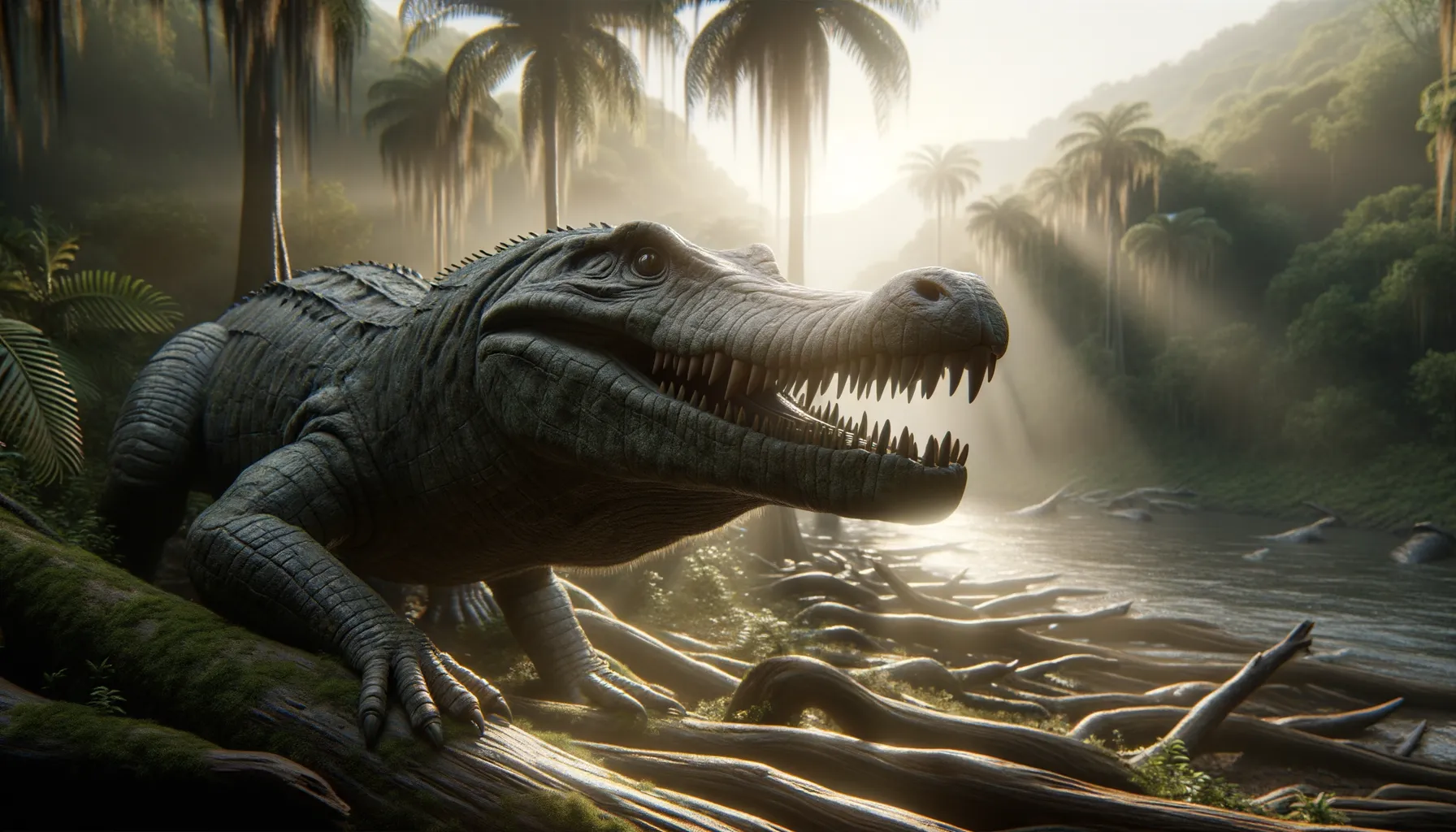
Belodon
Prehistoric predator with a crocodilian flair!
Period
Triassic
Length
Roughly 4 meters long.
Height
Around 1.5 meters tall.
Weight
Approximately 300 kilograms.
Often mistaken as a dinosaur, the Belodon is actually a prehistoric reptile known as a phytosaur. It lived during the Triassic period and had a crocodile-like appearance. Belodon is characterized by its long snout with sharp teeth, indicating its carnivorous diet. Its fossil remains have been primarily found in Europe and North America, offering crucial insights into the diverse ecosystems of the era.
Diet
Belodon was a carnivore, primarily feeding on fish and other small aquatic creatures. Its sharp teeth and long snout were perfect for catching slippery prey in rivers and lakes.
Hunting
As an ambush predator, Belodon relied on stealth and patience. It would remain submerged, with only its eyes and nostrils above water to surprise passing prey. This behavior is similar to modern-day crocodiles.
Environmental challenges
Belodon lived during the Triassic period, a time of significant environmental change. This era saw the emergence of new plant species and the evolution of various reptilian groups. Climate fluctuations and habitat transformations constantly challenged their survival, forcing adaptations over generations. Competition with other predators for resources also impacted their evolutionary success.
Speed
Moderate pace, suitable for ambushes.
Lifespan
Up to 25 years in the wild.
First discovery
Initially discovered in the 19th century.
Fun Facts
- Belodon was once thought to be a dinosaur, but it is actually a type of prehistoric reptile known as a phytosaur.
- Unlike many ancient reptiles, Belodon resembled modern crocodiles with its long snout and sharp teeth.
- Belodon lived during the Late Triassic period, over 200 million years ago, sharing habitats with early dinosaurs and other prehistoric creatures.
- Fossils of Belodon have primarily been discovered in parts of Europe and North America, indicating a wide range during its time.
- Belodon was a carnivore, and its physical adaptations suggest it was well-suited for hunting fish and other small animals in aquatic environments.
- The name 'Belodon' means 'arrow tooth,' referring to its teeth that are shaped to effectively catch slippery prey like fish.
Growth and Development
Belodon's growth was likely influenced by its environment and available resources. Juveniles might have grown quickly to avoid predators and secure their place in the food chain. As they matured, their development slowed, focusing on refining their hunting skills. These adaptations allowed them to thrive in diverse ecosystems and fluctuating environments during the Triassic period.
Habitat
Belodon thrived in aquatic environments, such as rivers and wetlands. These habitats provided ample food and hiding spots. The water systems supported a variety of prey and refuge from larger predators. Seasonal changes in water levels may have influenced their movement patterns and survival strategies.
Interaction with other species
Belodon likely competed with other aquatic predators for food, leading to diverse survival strategies. Social behavior might have been limited, with interactions largely confined to mating or territory disputes. Its presence in shared habitats suggests occasional encounters with terrestrial species approaching the water's edge. Coexistence may have involved a balance between competition and niche differentiation.
Natural lifespan
Belodon lived up to 25 years in the wild.
Reproduction
Belodon likely reproduced by laying eggs on riverbanks or similar environments. Females may have constructed nests to protect eggs from predators and environmental elements. Hatchlings would need to be independent shortly after birth, relying on instinct for survival. This reproductive strategy would ensure the continuity of the species despite various ecological challenges.
Social behaviour
Belodon's social interactions were minimal, possibly limited to mating rituals. These reptiles were likely solitary, avoiding competition and conflicts with others. During the breeding season, they may have displayed territorial behaviors to attract mates. Such social dynamics ensured that individuals maintained access to resources necessary for survival.
Fossil locations
Fossils of Belodon have been found in parts of Europe and North America. These findings provide insights into its geographical distribution during the Triassic period. Sites in Germany and England have revealed significant fossil samples. These discoveries help paleontologists understand more about the ecosystems and behaviors of extinct species.
